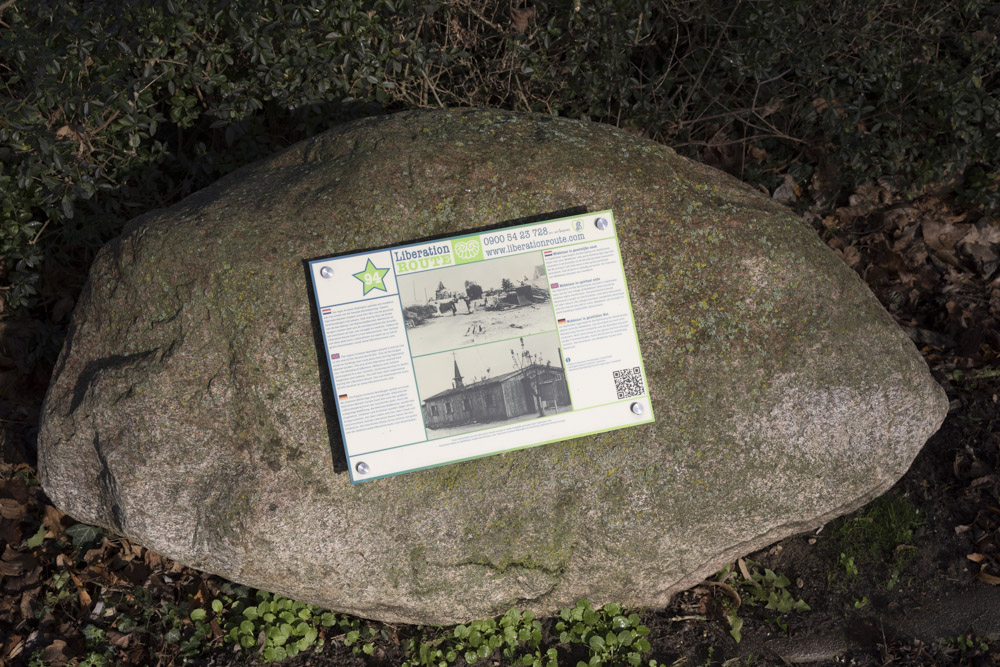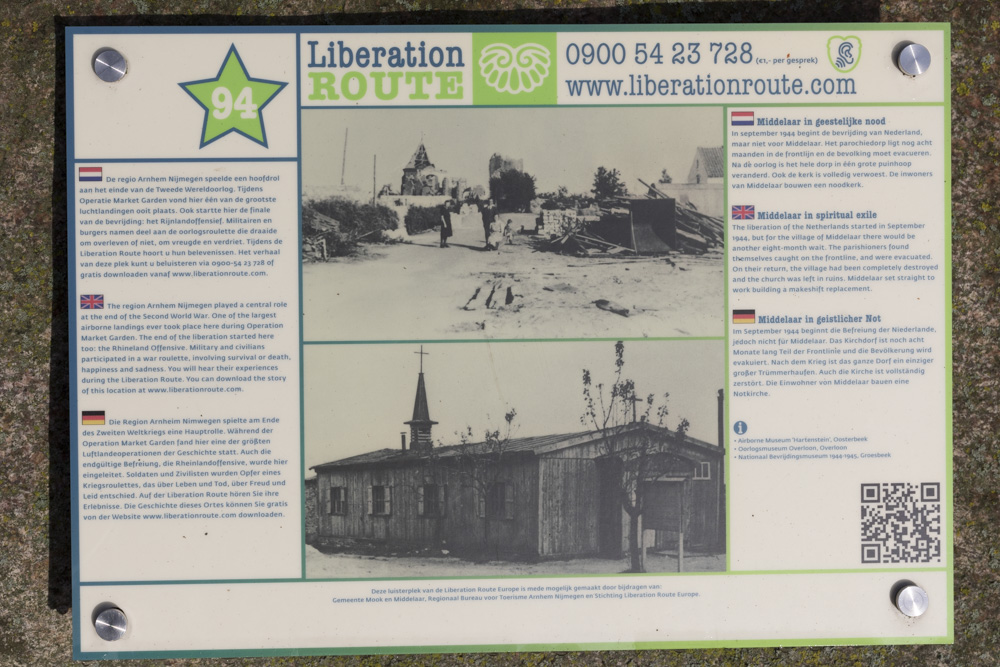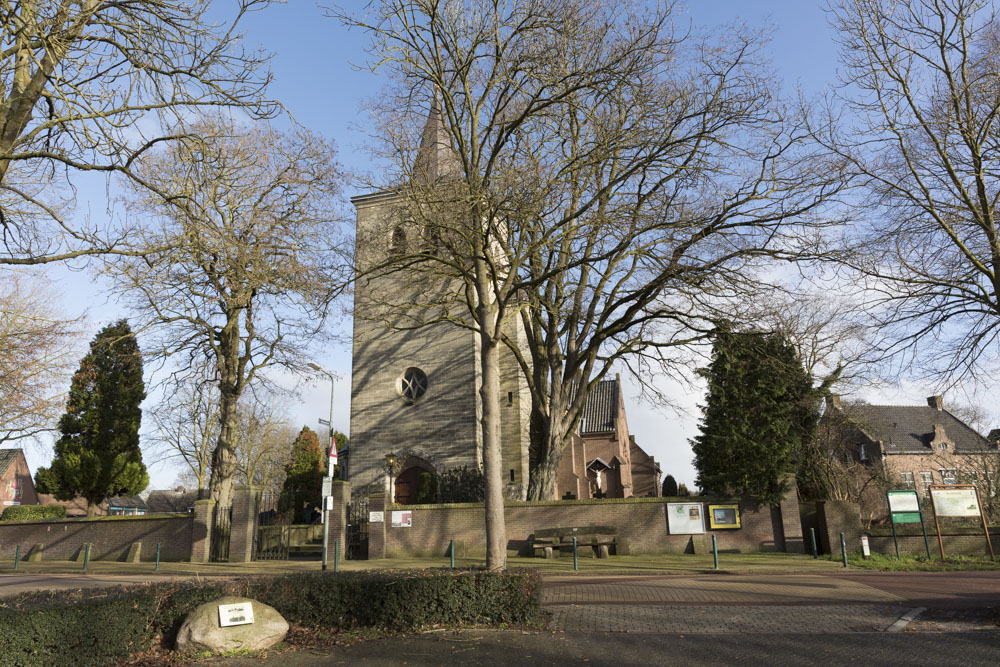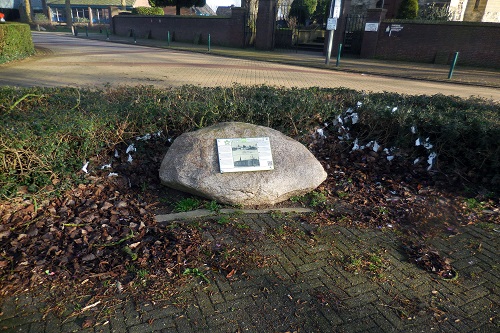Liberation Route Marker 094: Middelaar in spiritual exile
Middelaar in spiritual exile
After 17th September 1944, Middelaar had found itself directly on the frontline, with heavy bombardments making life unbearable for the local population. The villagers were forced to evacuate and make their way to a safe haven in the area around Mijdrecht via Germany, and then back across the Dutch border past Arnhem and Ede.
Operation Market Garden was launched on 17th September 1944. Parachutists were dropped around the cities of Eindhoven, Nijmegen and Arnhem. Their mission, was to conquer a number of bridges across the main rivers in the Netherlands, and to maintain their positions until the ground forces advancing from Belgium had arrived.
The Airborne parachutists were dropped in their thousands. Just like that, hundreds of gliders appeared in the sky, landing in fields and farmland with artillery, ammunition and even entire jeeps in their underbellies. The German resistance in the area, however, was strong.
To the south-east of Nijmegen, villages such as Mook, Molenhoek and Bisselt were soon liberated, whilst only a few kilometres to the south lay Middelaar, a village sandwiched between the Maas river on one side, and the steep hills of the Reichswald Forest on the other.
For four months, the frontline ran from Erlecom on the Waal river, via Groesbeek, to this point along the Maas by Middelaar. Life on the frontline had become unbearable, and everyone was evacuated. They spent weeks on the road, passing through Goch and Rees in Germany, and back into the Netherlands to an area near Mijdrecht. Their priest, Father Veugelers, had shepherded his villagers on this long journey, but would never see Middelaar again.
Audiospot - Middelaar in spiritual exile
Liberation Route Europe is a certified Cultural Route of the Council of Europe. With hundreds of sites and stories in nine European countries, the route links the main regions along the advance of the Allied Forces in 1943-1945.
The entire route consists of themed routes that can be travelled by by hiking, walking, cycling and car. These routes pass numerous historical and interesting sites and tell stories from a multitude of perspectives that were important in the final phase of World War II.
Many routes feature listening spots, offering the opportunity to listen to a historical story at a location. In addition, many ‘Vectors of Memory’ have been placed, indicating that the passer-by is on one of the Liberation Routes.
The routes can be found on the Liberation Route Europe website or in the app through which many stories can also be listened to.
Do you have more information about this location? Inform us!
Source
- Text: TracesOfWar & Liberation Route Europe
- Photos: Arjan Vrieze (1, 2, 3), Henny van Loenen (4)
Nearby
Museum
Point of interest
- War Damage Bovenste Plasmolen (old watermill) - Plasmolen
- War Damage Sint-Martinus Church - Cuijk
- Prisoner of war Camp Milsbeek - Milsbeek
Monument
- War Memorial Middelaar - Middelaar
- Memorial 82nd Airborne Division - Plasmolen
- Information board ‘The Liberators of Milsbeek’ - Milsbeek
Cemetery
- Dutch War Grave Cemetery Parish Middelaar - Middelaar
- Commonwealth War Cemetery Milsbeek - Milsbeek
- Dutch War Graves Roman Catholic Cemetery Milsbeek - Milsbeek
Remembrance Stone
- Stumbling Stones Maasstraat - Cuijk
- Stumbling Stones Molenpad - Cuijk
- Stumbling Stones Parallelweg 49 - Cuijk
Fortification
- Maas-line - Casemate 103B - Cuijk
- Maas-line - Casemate 104S - Cuijk
- Maas-line - Casemate 105B - Cuijk








